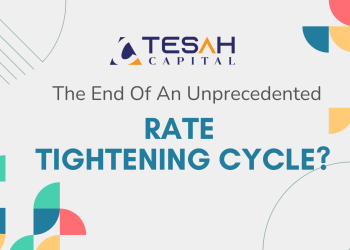Introduction
In our previous article, we explained what asset allocation was and why it is important. We learnt that asset allocation represents how an investor distributes their wealth across various asset classes, sectors and countries. We also learnt that asset allocation is a key factor that influences the risk and return on a portfolio. In this article, our focus is to explain what determines the particular allocations that investors choose. These factors include age/time horizon, the type of job, income/wealth, marital status and kids, risk aversion/tolerance and the level of inflation.
Age/Time Horizon
One of the factors that can affect your asset allocation is age. Typically, younger people are able to take on more risk because they have a longer time to recover should they make losses. Consequently, we tend to see that younger investors tend to invest more in riskier assets such as stocks. On the other hand, older investors typically invest more in less risky assets or shift their portfolio towards less risky assets as they get older and approach retirement. This is because they may not be able to withstand serious losses such as a steep drop in stock prices. Further, it is well known that most retirees usually invest for income and therefore tend to invest a lot in fixed income instruments such as bonds. Given that riskier investments offer a higher return and protection for inflation, older investors will still usually maintain some allocation of their assets to risky asset classes (such as stocks) to protect their wealth against inflation.
Type of Job
The type of job one does can influence their asset allocation. For example, an investment banker or somebody whose income from their employment fluctuates just like stock returns may be more inclined to invest less of their wealth in stocks and more in bonds. This is because their income depends a lot on performance and fluctuates a lot. Consequently, they are better off seeking some stability by allocating a good portion of their wealth to bonds. A civil servant or somebody’s whose salary is very stable has cash flows from employment that resemble bond returns and can therefore afford to invest more in the stock market. The stock market gives them potential for wealth appreciation whilst their job provides stable income/cash flows.
Income/Wealth
May be there is a reason why the rich get richer? Well, the simple answer is that wealthier investors can afford to take on more risk. Why is this the case? This is because they can absorb risk or shoulder loses better than an investor with a smaller wealth. Richer investors won’t have their income or livelihoods at risk should they lose income/wealth from investing. Consequently, they can afford to take on more risk. As we know, risk and return are bedfellows so that is why richer investors usually get richer. They can take more risk and therefore they usually make more money.
Marital Status and kids
Whether you are married and have kids is another key factor that influences an investor’s asset allocation. Typically, being married and having kids changes the equation for many people. You have to provide for the family, pay school fees, plan for your untimely death, make provision for healthcare expenses, plan for family vacations, take care of in-laws etc. What this means is that most people naturally are less inclined to take on higher risk once they get married. In addition, having children tends to reduce the risk appetite of most investors. Consequently, most investors become more cautious out of an evolutionary need to be able to provide for our families no matter what happens. Most parents will not want to ‘gamble’ away their wealth least they find themselves in an uncomfortable situation where to can’t provide for their families. There is also usually a social stigma associated with not being able to provide for your family. This explains why a number of investors decide to take on less risk once they get married and having children to take care of.
Risk aversion/tolerance
We are all very different in a number of ways. Whilst some people have a natural inclination to take on a lot of risk (they are risk tolerant), others cannot stand or bear risk (they are risk averse). The key point is to know yourself as an investor. It is perfectly fine to be risk averse or to be risk tolerant. The important point is that your portfolio should be tailored to your risk preference. If you are risk tolerant, then more of your portfolio can be allocated to riskier asset classes. If you are risk averse, then less of your portfolio should be allocated to risky asset classes. It is extremely important not to follow trends! For example, Bitcoin has experienced phenomenal growth increasing from about $10,000 to $40,000 in less than a year. This motivated a number of investors to jump into the cryptocurrency market. This level of price movement however suggests that this is a potentially very risky asset class. Indeed, just as some investors jumped into the market, Bitcoin plunged to about $33,000. Some of these investors were not mentally prepared for these loses.
Level of inflation in the country
Research has shown that a country’s experience with inflation is one of the key factors that influences asset allocation. Countries that have historically had higher levels of inflation tend to invest more in stocks and real estate or asset classes that can provide a hedge (protection) against inflation. In a sense, they are forced to take on higher risk or invest in riskier asset classes so that inflation does not eat away all their wealth. For example, the U.S and U.K have historically invested more in stocks compared to Germany. Historically, these two countries have had higher inflation compared to Germany. Further, Germany has historically had a very good government pension system which provided people with less incentives to seek to make higher returns by investing in the stock market.
Conclusion
In this article, we have learnt that there are a number of factors that influence the asset allocation of investors. These factors include age/time horizon, the type of job, income/wealth, marital status and kids, risk aversion/tolerance and the level of inflation. Younger investors tend to invest more in riskier assets. People with income from employment that is stable should be able to invest a bit more in riskier asset classes. Richer investors who usually can afford to take on more risk usually invest more in riskier asset classes. Investors who have a natural inclination to take risk (are risk tolerant) tend to invest more in riskier asset classes. Investors who are married and have kids usually tend to take on less risk compared to their counterparts who are not married and who do not have kids. Finally, investors in countries that have historically experienced high levels of inflation tend to invest more in riskier asset classes such as stocks.
Written By;
Elikplimi Komla Agbloyor
Senior Lecturer, University of Ghana Business School
Chair of Research Committee, Tesah Capital
&
Abel Mawuko Agoba
Lecturer, University of Professional Studies
External Research Fellow, Tesah Capital






